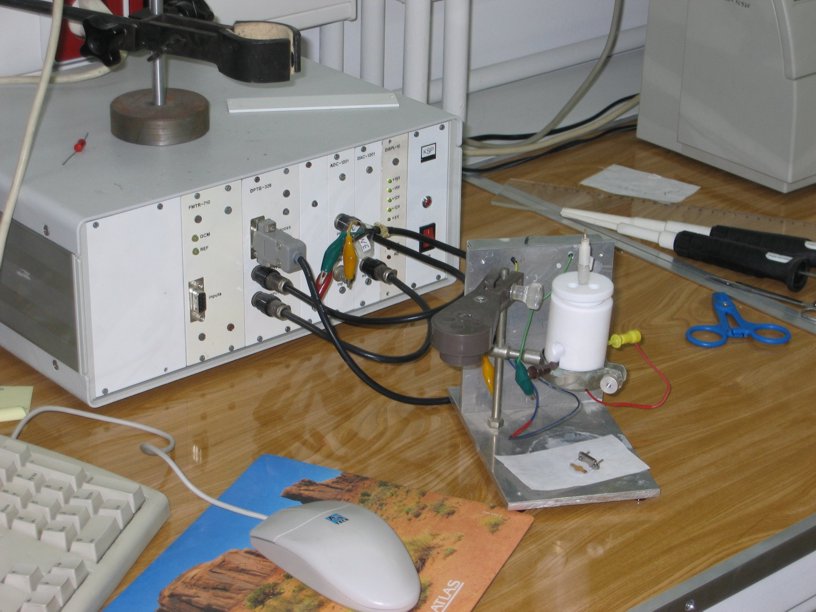EQCM is a modern electrochemical technique, which allows a simultaneous measurement of quartz resonator oscillation frequency change and current amplitude as a function of changing potential.
Specially prepared thin quartz crystal, with evaporated metal electrodes (Pt or Au) on both of its sides, serves as a resonator. Between those electrodes an alternating electric potential is applied in order to cause elastic oscillations in the crystal, which produce an acoustic wave. The electric potential oscillation frequency is tuned in such a way, so that a standing acoustic wave is produced. One of the electrodes is in contact with electrolyte solution and is at the same time a working electrode in a three-electrode electrochemical cell. Deposition of additional alien layer on the surface of the working electrode, causes the change in thickness of quartz resonator with a corresponding change in resonance frequency.
|
